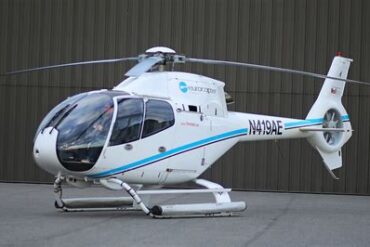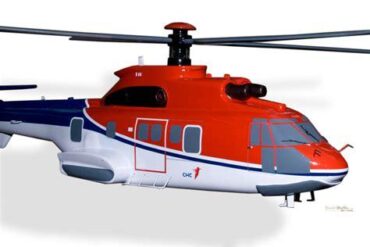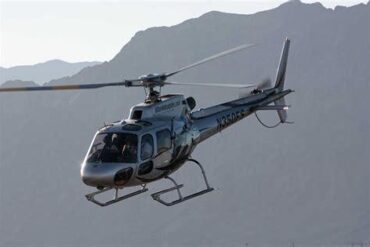The Airbus/Eurocopter EC135T2e is a highly versatile light twin-engine helicopter widely recognized for its exceptional performance and operational efficiency. This article delves deep into the price and operating costs associated with the EC135T2e, providing a comprehensive overview for potential buyers and operators.
Overview of the EC135T2e
The EC135T2e is part of the EC135 family, renowned for its advanced technologies and flexible design. It is particularly suited for emergency medical services (EMS), law enforcement, and utility missions. Equipped with state-of-the-art avionics and a spacious cabin, it can accommodate a range of configurations, making it a popular choice across various sectors.
Key Specifications
-
Length: 11.18 m (36 ft 8 in)
-
Rotor Diameter: 10.20 m (33 ft 5 in)
-
Height: 3.61 m (11 ft 10 in)
-
Maximum Takeoff Weight (MTOW): 2,910 kg (6,400 lb)
-
Cruise Speed: 255 km/h (158 mph)
-
Range: 600 km (373 miles)
-
Engine: Two Turbomeca Arrius 2B2 engines
These specifications underline the EC135T2e’s capabilities, highlighting its suitability for diverse missions while ensuring reliability and safety.
Purchase Price of the EC135T2e
When considering the purchase price of an EC135T2e, several factors come into play, including the model’s age, condition, and specific configuration. On average, the market price for a new EC135T2e is approximately $3 million to $4 million. This price can vary significantly based on customization options such as medical equipment, law enforcement modifications, or VIP configurations.
Factors Influencing the Purchase Price
-
New vs. Used: New helicopters generally command higher prices. However, the used market can offer significant savings, with prices ranging from $1.5 million to $2.5 million for well-maintained models.
-
Configuration: Custom features, such as advanced medical systems or enhanced avionics, can add to the initial cost. Operators must weigh these options against their operational needs.
-
Location: Prices can fluctuate based on geographic location due to demand and supply dynamics. Regions with high demand for EMS or utility helicopters may see higher prices.
-
Dealer Markup: Purchasing through a dealer may include additional costs for service and warranties, which should be factored into the total purchase price.
Financing Options
Potential buyers can explore various financing options to make the purchase of the EC135T2e more manageable. Options include:
-
Loans from banks or financial institutions: Traditional financing methods where buyers can obtain loans secured against the helicopter.
-
Leasing: Allows operators to use the helicopter without the full upfront purchase price. This option often comes with lower initial costs and can be beneficial for short-term needs.
-
Government or private grants: Some regions offer financial assistance for EMS operations, which can offset initial purchase costs.
Operating Costs of the EC135T2e
Once the helicopter is acquired, understanding the operating costs is crucial for effective budgeting and operational planning. The operating costs of the EC135T2e can be broken down into several categories:
1. Fuel Costs
Fuel is one of the primary operating expenses for any helicopter. The EC135T2e typically consumes about 230 liters (61 gallons) of fuel per hour. Given current fuel prices averaging around $5 per gallon, operators can expect fuel costs to be approximately $305 per flight hour.
2. Maintenance and Repairs
Routine maintenance is essential to ensure the reliability and safety of the EC135T2e. Maintenance costs can vary depending on usage, but a general estimate for annual maintenance is around $50,000 to $100,000. This includes:
-
Routine inspections: Required every 100 flight hours or annually, whichever comes first.
-
Engine overhauls: These typically occur after a specified number of flight hours, leading to significant costs that can range from $150,000 to $300,000.
-
Parts and labor: Regular replacement of parts and labor costs contribute to the overall maintenance budget.
3. Insurance Costs
Insurance is a critical component of operating costs, providing coverage against accidents and liabilities. For the EC135T2e, annual insurance premiums can range from $25,000 to $50,000, depending on factors such as:
-
Operational use: Medical services may attract higher premiums compared to private use.
-
Pilot qualifications: Experienced pilots can lower insurance costs.
-
Safety record: A good safety record can also contribute to lower premiums.
4. Crew Salaries
If operating the EC135T2e commercially, crew salaries must be accounted for. The typical salary for a pilot ranges from $80,000 to $150,000 annually, depending on experience and location. Additional crew members, such as medics or maintenance personnel, may also require salaries in the range of $40,000 to $100,000.
5. Hangar and Storage Fees
Where the helicopter is stored can impact operating costs. Hangar fees vary significantly based on location but can average around $500 to $2,000 per month. Operators in metropolitan areas often pay higher fees due to limited space.
6. Miscellaneous Costs
Other operating costs may include:
-
Landing fees: Charged by airports or heliports, typically ranging from $50 to $300 per landing.
-
Training costs: Regular training for pilots and crew to maintain certifications can add several thousand dollars annually.
-
Fuel tax: Some regions impose taxes on fuel, which can further increase operational expenses.
Total Operating Cost Estimation
Considering all the above factors, the estimated total operating cost for the EC135T2e can range from $600,000 to $1 million annually, depending on usage, operational requirements, and maintenance schedules. Below is a breakdown of these costs based on an average operation of 500 flight hours per year:
| Cost Category | Estimated Annual Cost |
|---|---|
| Fuel | $152,500 |
| Maintenance | $75,000 |
| Insurance | $37,500 |
| Crew Salaries | $200,000 |
| Hangar Fees | $12,000 |
| Miscellaneous | $50,000 |
| Total | $527,000 |
This table provides a clear overview of the potential operating costs, highlighting the need for thorough financial planning.
Conclusion
The Airbus/Eurocopter EC135T2e stands out as an exceptional choice for a variety of missions, thanks to its impressive performance and adaptability. While the initial purchase price may seem significant, understanding the ongoing operating costs is equally important for sustainable operations. By carefully considering all aspects, potential buyers can make informed decisions that align with their operational needs and budget constraints.


















